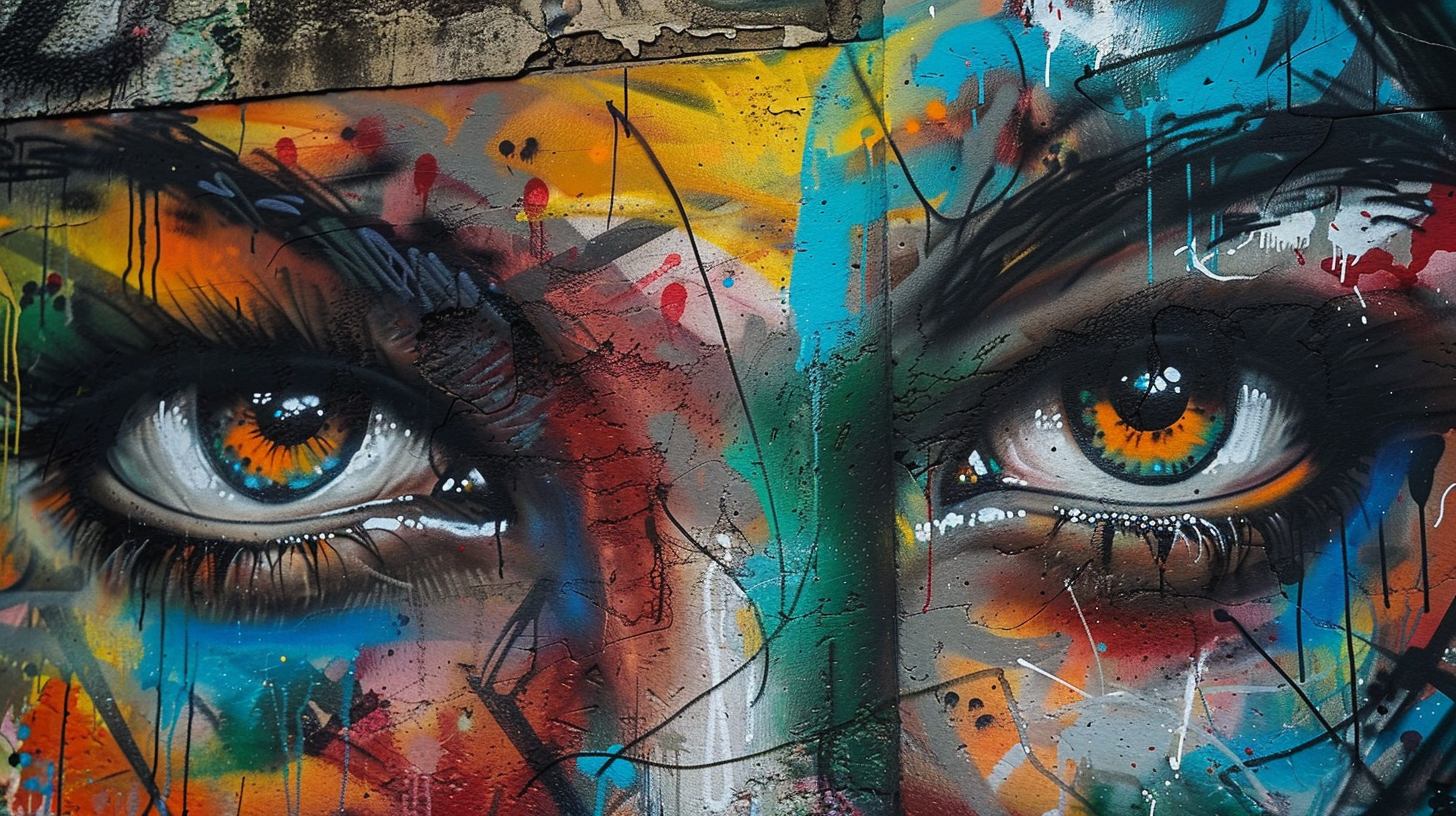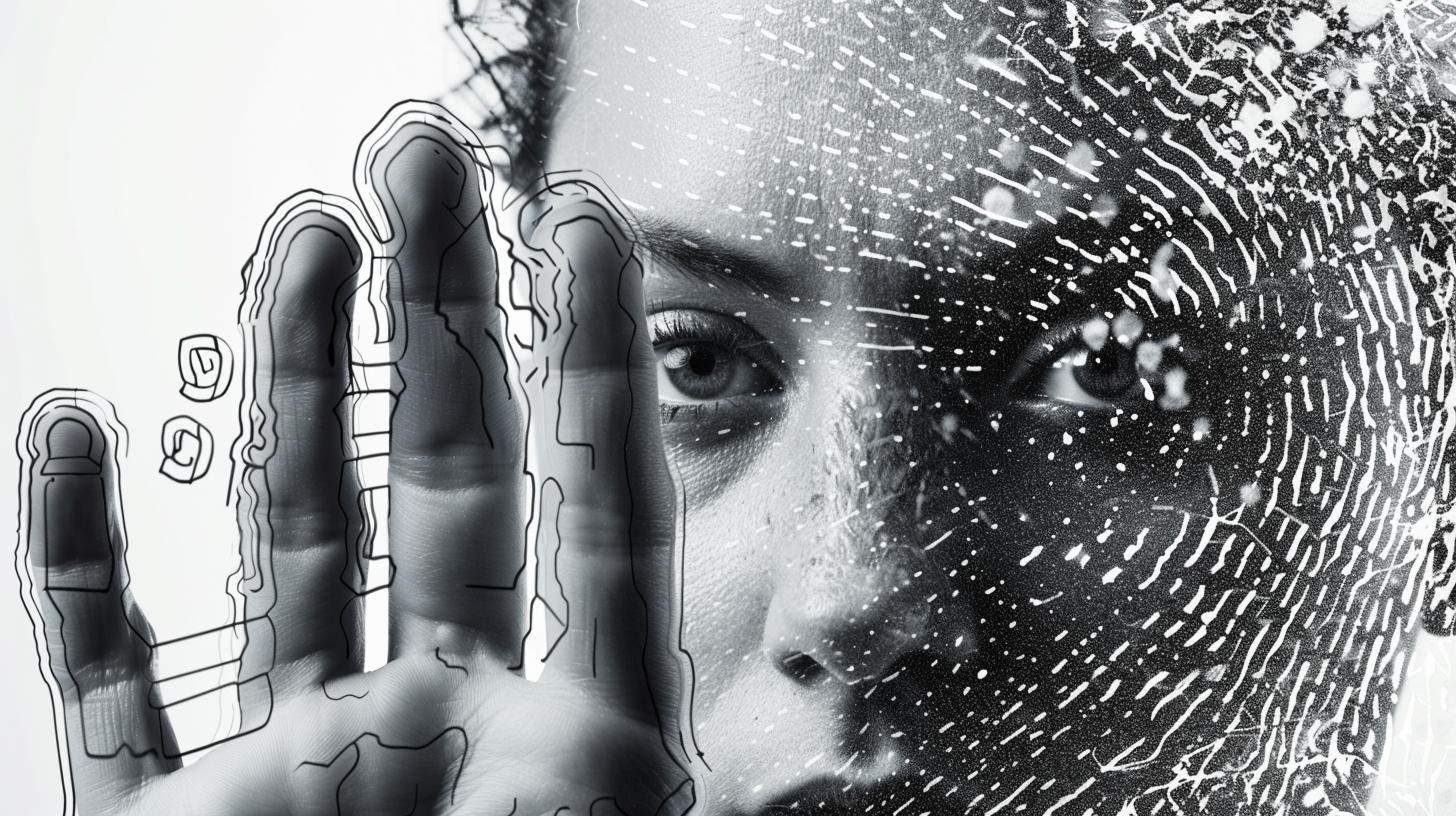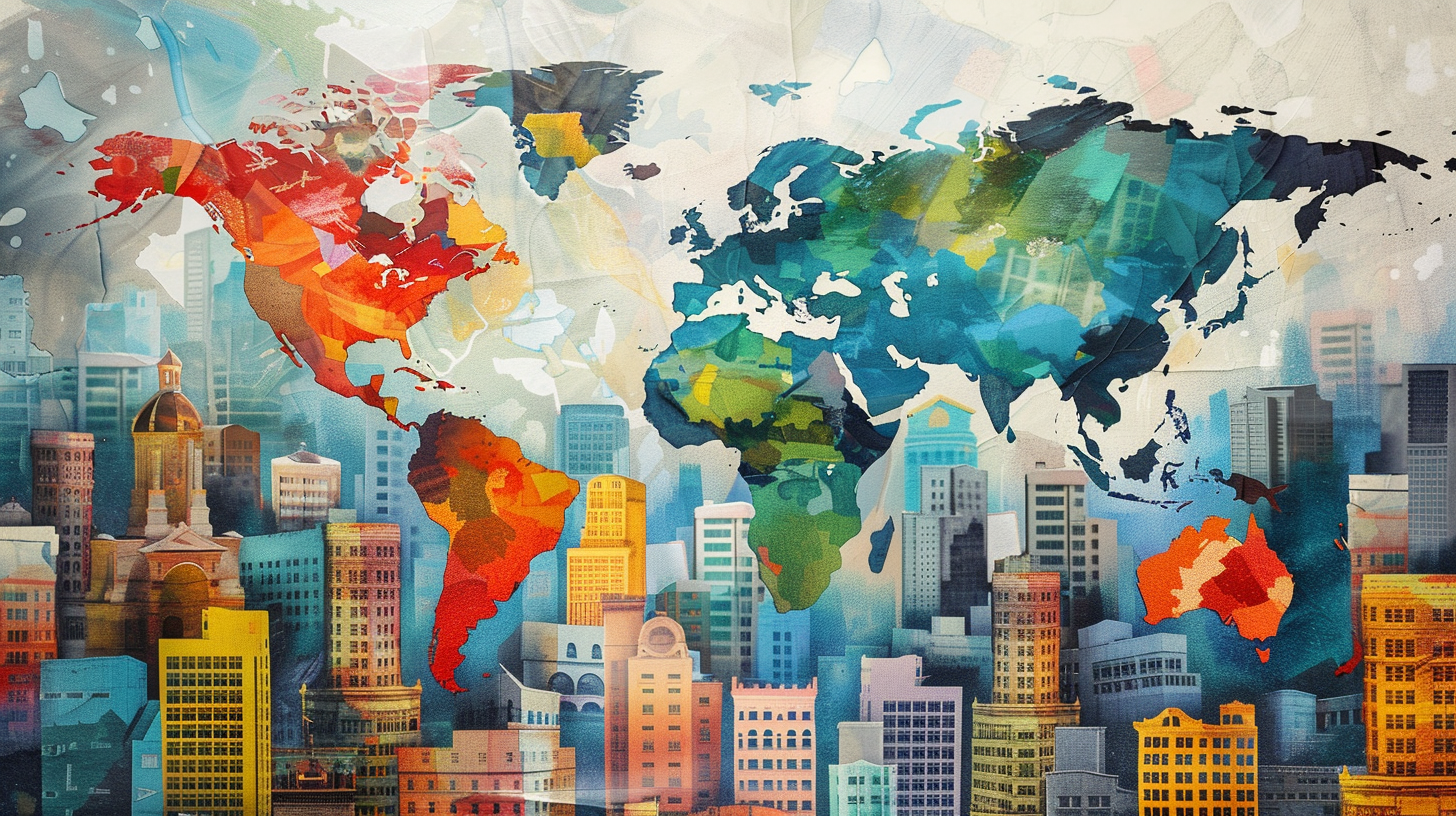Table of Contents Show
Just as Banksy’s elusive identity has captivated the world, street art has emerged from the shadows to claim its place in the public discourse and urban culture. We’ve seen its evolution from mere graffiti, often dismissed as vandalism, to a powerful medium of expression that narrates the untold stories of our cities. It’s not just about the aesthetic appeal; it’s a dialogue between the artist and the community, a voice for the voiceless, and a mirror reflecting societal issues. As we explore its multifaceted role, from urban regeneration to legal battles, we find ourselves at the threshold of understanding its true impact and potential. What lies ahead for street art, and how will it shape the future of our urban landscapes? Let’s commence on this journey together, exploring the vibrant intersections of art, society, and culture.
Key Takeaways
- Street art transforms urban spaces, enhancing the cultural and visual landscape.
- It serves as a powerful platform for social and political commentary.
- The evolution of street art reflects a broader acceptance and integration into mainstream culture.
- Street art fosters community engagement and revitalizes neglected areas.
The Evolution of Street Art
Tracing the evolution of street art reveals how it’s transformed from simple graffiti to a respected form of urban expression. We’ve witnessed its journey from the shadows of illegality to the spotlight of galleries and city commissions. This proof wasn’t just about artists gaining recognition; it was a broader cultural shift that embraced freedom, creativity, and the voice of the urban landscape.
At its heart, street art has always been about freedom. Freedom to express, to challenge, to beautify, and to question. It’s this essence that’s captivated cities and people worldwide, turning bland walls into canvases for stories, ideas, and social commentary. We’ve seen it evolve, adopting new techniques and mediums, from spray paint to installations and beyond. This adaptability has not only kept it relevant but has propelled it into a global phenomenon.
The journey of street art reflects our collective desire for an open, vibrant urban culture. It’s been a battleground for discussions about public space, ownership, and the right to express. As it’s evolved, so have our conversations about what art is and who it’s for. We’ve come to understand that art doesn’t need to be confined to galleries; it belongs in the streets, where it can speak directly to us, challenge us, and inspire us.
As we continue to navigate the evolving landscape of street art, we’re reminded of its power to transform spaces and minds. It’s a affirmation to the indomitable spirit of freedom that pulses through our cities, urging us to look, to see, and to engage with the world around us in profoundly new ways.
Street Art Vs. Graffiti: Understanding the Differences
While both street art and graffiti paint the urban landscape, they differ fundamentally in intent, execution, and often, public perception. Graffiti’s roots are deeply embedded in expressing identity and rebellion, often marked by tags and messages that scream for attention in hidden or highly visible urban spaces. It’s the voice of the unseen, a bold declaration of existence from those who feel marginalized. Street art, on the other hand, often takes a more communal approach, seeking to engage the public, provoke thought, or beautify spaces with elaborate murals and installations. It’s not just about the artist’s ego but about creating a dialogue with the community.
We’ve seen how graffiti can be misunderstood as mere vandalism, a misconception that fails to recognize its role as a form of social and political commentary. Street art, with its often sanctioned and celebrated presence, enjoys a somewhat more favorable status, being seen as a legitimate form of artistic expression. This differentiation is critical, for it influences how we, as a society, appreciate and preserve these art forms.
Importantly, the freedom to express oneself through either medium is a proof of the vibrant, evolving nature of urban culture. As we navigate the bustling streets of our cities, we’re invited to pause and reflect on the messages and beauty these artists offer. Whether it’s a graffiti tag that challenges us to see the invisible or a street mural that brightens a forgotten corner, both forms enrich our urban experience, demanding we consider the diverse voices that shape our communities.
The Role of Street Art in Urban Regeneration
Street art has become a transformative force in urban regeneration, breathing new life into neglected neighborhoods and fostering a sense of community pride. We’ve witnessed how these vibrant murals and installations turn dull, forgotten corners into bustling hubs of creativity and conversation. It’s not just about beautifying the streets; it’s about injecting energy and hope into areas that many had written off.
We see it as a powerful tool for change, encouraging residents and visitors alike to view these spaces in a new light. Street art sparks dialogues, challenges perceptions, and builds bridges in ways that traditional revitalization efforts often can’t. It’s a grassroots approach to urban renewal, driven by artists who passionately believe in the power of their work to inspire and unite.
These public art projects attract tourism, stimulate local economies, and provide artists with platforms to showcase their talent on a grand scale. They turn the city into a canvas, a gallery without walls, accessible to all. It’s a celebration of freedom, creativity, and the collective spirit of a community determined to rise above its challenges.
In embracing street art, we’re not just revamping physical spaces; we’re reviving the soul of our cities. We’re creating vibrant, dynamic environments where people want to live, work, and play. It’s a vital to the resilience and creativity of urban communities, a reminder that even in the face of decay, beauty and hope can flourish. Through street art, we’re not just regenerating buildings; we’re reimagining our urban landscapes and redefining what it means to be a community.
Street Art as a Voice for the Voiceless
We often find that street art serves as a powerful megaphone for those whose voices are marginalized or silenced in society. It’s not just paint on a wall; it’s a shout, a whisper, a plea, and a declaration all at once. Street art gives a platform to those who might otherwise go unheard, transforming public spaces into arenas of free expression. This form of art cuts through the noise of the daily grind, demanding attention and sparking conversations among passersby who might not usually engage with social or political issues.
This is especially critical in communities where freedom of speech isn’t guaranteed, or where the media is heavily censored. Here, street art becomes a form of resistance, a way to reclaim public space and assert individual and collective identities. It’s a bold assertion of presence, a statement that ‘we’re here, we matter, and we refuse to be silenced.’
| Theme | Impact | Example |
|---|---|---|
| Social Justice | Raises awareness | Murals commemorating victims of injustice |
| Environmental Concerns | Promotes sustainability | Artworks highlighting climate change effects |
| Political Critique | Encourages political engagement | Satirical pieces targeting political leaders |
| Cultural Identity | Celebrates diversity | Pieces reflecting local history and heritage |
| Community Voice | Fosters unity and dialogue | Collaborative murals in communal spaces |
In embracing street art, we’re not just admiring creativity; we’re listening to voices clamoring for change, for recognition, and for freedom. It’s a vibrant reminder of the power of public expression and the critical role it plays in our collective quest for a freer, more just society.
The Global Language of Street Art
Across continents and cultures, street art speaks a universal language, connecting people through its vivid imagery and poignant messages. We see it as a form of expression that transcends linguistic barriers, enabling artists and viewers alike to engage in conversations about freedom, identity, and societal issues without uttering a single word. It’s a visual shout for attention in our often indifferent urban environments, demanding we consider perspectives other than our own.
We’ve witnessed how street art can bridge gaps between diverse communities, fostering a sense of unity and shared purpose. In cities around the world, walls become canvases that reflect not only local concerns but global ones, illustrating the interconnectedness of our struggles and dreams. It’s as if these artists, armed with spray cans and stencils, are drafting a visual manifesto for freedom, challenging us to question, to rethink, and, most importantly, to feel.
Additionally, we celebrate street art’s ability to democratize public spaces, inviting everyone to experience art outside the confines of traditional galleries. This importance is crucial in our pursuit of freedom, as it guarantees that voices from all walks of life are heard and seen. Street art doesn’t discriminate; it’s accessible to anyone who walks by, making art part of our daily lives and conversations.
In embracing the global language of street art, we acknowledge its power not just to decorate, but to disrupt and connect. It’s a sign of humanity’s enduring spirit of resilience and our collective desire for a world that values freedom above all. Through each piece, we’re reminded that, despite our differences, we share common hopes, fears, and aspirations.
Legal Battles and Street Art
We’re now turning our attention to the contentious legal battles that intertwine with street art. From copyright issues to the ongoing debate of vandalism versus art, these conflicts have set significant legal precedents. Let’s explore how these legal challenges have shaped the street art landscape.
Copyright Issues Explored
Street art’s intersection with copyright law has sparked numerous legal battles, challenging traditional notions of ownership and public space. We’ve seen artists and authorities clash over who holds the rights to art that’s often freely given to the public. These disputes underline a broader quest for essential freedom within urban landscapes, pushing us to reconsider what we value in our shared spaces. It’s not just about legality; it’s about recognizing and respecting the creative expressions that color our cities. We advocate for a world where street art is celebrated as a crucial part of urban culture, not stifled by restrictive copyright claims. Let’s champion a future where artists can freely contribute to the cultural tapestry of our communities without fear of legal repercussions.
Vandalism Vs. Art Debate
Exploring the thin line between vandalism and art ignites heated debates in the world of street art, challenging perceptions and legal boundaries alike. We’re traversing a landscape where the public’s hunger for authentic expression clashes with the law’s need to protect property. This tension has fostered a unique battleground:
- Freedom of expression is pitted against property rights.
- Public spaces become canvases for unsanctioned masterpieces.
- Artistic innovation flourishes under the threat of legal repercussions.
- Community voices are amplified through visual dialogue.
We advocate for a world where creativity isn’t stifled by fear of retribution but is celebrated as a crucial component of urban culture. It’s about finding balance, respecting boundaries, and recognizing the transformative power of street art.
Legal Precedents Set
Our journey through the vibrant world of street art now brings us to the courtroom, where legal battles have set significant precedents impacting artists and communities alike. These legal conflicts highlight the thin line between vandalism and recognized art, with courts often deliberating on the rights of property owners versus the expressive freedom of artists. It’s in these legal arenas that we’ve seen victories for street art’s legitimacy, protecting artists’ works under copyright laws when they contribute to a public dialogue. These rulings not only safeguard artists’ creations but also validate street art’s role in enriching urban culture. We’re witnessing a shift towards a more inclusive understanding of public space, where art’s value is acknowledged and protected, signaling a win for creative freedom and community engagement.
Iconic Street Artists and Their Impact
We’re now turning our attention to the remarkable individuals behind the spray cans and stencils, whose works have reshaped cityscapes and perceptions worldwide. Artists like Banksy and Shepard Fairey have not only captured global attention with their provocative art but have also sparked significant conversations about politics, society, and the role of art in public spaces. Their impact extends beyond the visual, challenging us to see the world through a lens that questions and critiques the status quo.
Banksy’s Global Influence
Banksy’s art often transforms city walls into powerful social commentaries, profoundly shaping urban culture worldwide. We’ve seen how his elusive identity adds mystique, making each piece a treasure hunt that captivates the imagination. His work isn’t just art; it’s a call to freedom, challenging us to question the norms and see the world through a lens of critical skepticism.
- Encourages public discourse on social issues
- Challenges perceptions of legality and ownership
- Inspires a generation to value art outside galleries
- Blurs the lines between high art and street culture
His influence stretches far beyond the streets, prompting discussions in cafes, offices, and homes. We’re not just observers; we’re participants in a global conversation about what it means to live freely and authentically.
Shepard Fairey’s Bold Statements
Just as Banksy’s work has captivated the global audience, Shepard Fairey’s bold statements through his art have also left an indelible mark on urban culture. His iconic "Obey Giant" campaign isn’t just a visual phenomenon; it’s a call to question authority and the world around us. We’ve seen his work challenge the status quo, urging us to confront societal issues head-on. Fairey’s art doesn’t just decorate the streets; it sparks conversations, igniting debates on freedom, surveillance, and the role of art in activism. His "Hope" poster for Barack Obama’s 2008 campaign showed us the power of art in political discourse, proving that our voices matter. In essence, Fairey’s art embodies the spirit of rebellion, encouraging us to stand up, speak out, and reclaim our spaces.
Street Art in Digital and Social Media
Often, we find street art transcending physical spaces to make a significant impact on digital and social media platforms. This digital migration isn’t just about broader exposure; it’s about engaging with audiences on a level that traditional galleries often can’t reach. We’re witnessing an era where the palpable energy of street art fuses with the boundless space of the internet, offering a new dimension to urban culture.
Here’s why this shift is pivotal:
- Democratization of Art: Street art on social media platforms dismantles the barriers that galleries and museums often erect. Anyone with internet access can view, share, and discuss these works, making art truly for the masses.
- Enhanced Engagement: The interactive nature of digital platforms allows for immediate feedback and dialogue, creating a dynamic relationship between the artist and the audience.
- Global Reach: Artworks confined to a single location can now gain international recognition, enabling artists to share their messages with a global audience.
- Archive and Legacy: Digital platforms serve as an archive, ensuring that even if a piece is physically removed, its essence persists online, contributing to the artist’s legacy.
The Future of Street Art in Urban Landscapes
As we look toward the future, street art continues to evolve, playing a pivotal role in shaping urban landscapes and communities. It’s not just about tagging or making bold statements anymore; it’s about redefining public spaces and sparking conversations. We’re seeing a surge in artists who use the city as their canvas, transforming bland walls into vibrant expressions of identity and resistance.
The future we envision is one where street art breaks free from its traditional boundaries, melding with digital technologies to create interactive experiences. Imagine walking through a city where murals change and evolve before your eyes through augmented reality, inviting passersby into a dynamic dialogue with the art. It’s a future where street art becomes a tool for urban renewal, turning neglected areas into hubs of creativity and innovation.
We’re also pushing for a world where street artists are recognized as legitimate contributors to the cultural landscape. Their work goes beyond mere decoration, acting as a mirror to society, reflecting its beauty and its flaws. We believe in fostering partnerships between artists, communities, and city officials, creating policies that not only protect street art but encourage its growth.
As the lines between public and private spaces blur, we’re championing a movement that values freedom of expression and the transformative power of art. Street art’s future lies in its ability to adapt, challenge, and inspire. It’s not just surviving; it’s thriving, reshaping our urban environments into canvases of collective expression and engagement. We’re not just observers; we’re active participants in this cultural revolution.
Conclusion
We’ve journeyed through the vibrant alleys of street art, witnessing its evolution from mere vandalism to a voice echoing in urban canvases worldwide. Like seeds sprouting in concrete cracks, street art blooms in unexpected places, transforming gray into a spectrum of expression. This art form, once the underdog, now commands the global stage, reshaping cities and conversations alike. As we look ahead, it’s clear: street art’s roots run deep, promising a future as colorful and resilient as the communities it represents.








